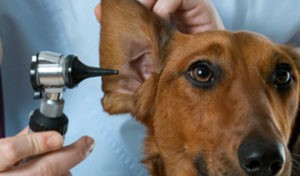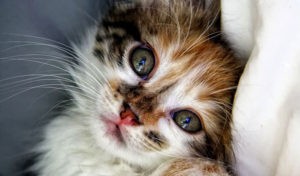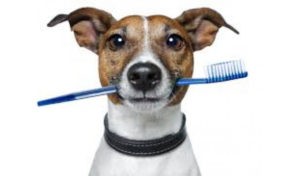 Cool, crisp weather brings the potential for new toxins for your pets to encounter. Let’s briefly review some of the seasonal risks you need to be aware of in order to keep your pets safe.
Cool, crisp weather brings the potential for new toxins for your pets to encounter. Let’s briefly review some of the seasonal risks you need to be aware of in order to keep your pets safe.
Rodenticides
As the weather cools down, vegetation dies off and crops are harvested, mice and rats will often come inside structures looking for food and warmth. This in turn leads most homeowners to look for ways to “disinvite” these unwelcome visitors! If you need to use a rodenticide, use it with extreme care and keep it as far away from your pets as possible. Many of the most commonly used rodenticides can be fatal if ingested, even in very small amounts. Rodenticides often come formulated in grain-based pellets or wax blocks and can smell enticing to pets, especially dogs. Ensure that any rodenticide found in the house are enclosed in a pet-proof bait station and is secured in a place pets can’t access. Be aware, however, that some determined pets may attempt to ferret out these stations and that some may be able to chew through supposedly “pet-proof” boxes and covers. Do not allow pets to roam your neighborhood unsupervised, because while you may take care to secure your bait stations, neighbors or business areas may not be as careful.
If you do need to use one of these products, it is absolutely essential to keep any packaging that the substance came in so that if your pet does accidentally ingest the poison, your veterinarian will know what kind it is and how to treat it. If the rodenticide is being supplied by a professional exterminator, ask for a copy of the packaging and any supporting safety information. Rodenticide is a common cause of poisoning in pets, and snap traps or live bait traps may be the safest option to consider for rodent control if you have animals in your home.
Antifreeze
When the temperature starts to dip below freezing, many people add antifreeze to their cars. While this can be a lifesaver in terms of keeping a vehicle running properly in cold weather, it can be deadly for your pet. Antifreeze contains a toxic substance, ethylene glycol, which is an odorless, sweet-tasting chemical that causes kidney failure, seizures and death. Just a teaspoon or tablespoonful can be fatal to a small pet.
Pets are often poisoned when they lick up spills in the driveway or garage. For this reason, be very careful when filling up your car. Makes sure none of the substance is leaking out of your car’s cooling system, and be sure to promptly clean up any spills. Store partially used containers out of the reach of pets and children.
Initial signs of antifreeze ingestion include the animal appearing to be “drunk.” Other signs include nausea, vomiting and tremors. If you think there is a chance your animal has ingested antifreeze, see your veterinarian immediately. The sooner that care can be initiated, the better the prognosis.
Cold and Flu Medications
While I know you know better than to give human medications to your pet without consulting with your veterinarian, fall and winter are cold and flu season for humans, and it’s important to be on guard. If you are feeling under the weather, take care not to leave any of your human medications out in places where your pets could accidentally ingest them. Many dogs love to rip apart packaging and can accidentally ingest the pills inside the bottle or box. This is bad, because our pets do not tolerate many common cold medications. Acetaminophen can cause liver failure in animals and change the composition of your pet’s blood so it can no longer carry oxygen. Decongestants often act like stimulants, causing elevated heart rates and blood pressure and leading to seizures.
Potpourri
The scent of potpourri in the air, especially at this time of year, can be soothing to us. Keep in mind, however, that those holiday scents may also seem pretty inviting to a food-driven pet. Be careful if using any liquid-type potpourri, such as that found in potpourri pots or warmers, to scent your house. The liquid is typically a mixture of essential oils and cationic detergents. If ingested, the cationic detergents can cause severe chemical burns to the mouth and stomach.Other signs of ingestion include drooling and vomiting. Cats are particularly prone to coming into contact with potpourri burners and holders when they jump up on a counter to investigate. Many cats will knock over these containers, getting the potpourri oil on their coats and paws. They then ingest the chemical during grooming. While dried potpourri scented with essential oils is not as big of a concern, some pets may be attracted to chewing on or eating attractive-smelling pine cones, dried flowers or other plant material. Keep in mind that some of these flowers and plant materials may themselves be toxic to pets. It’s a good idea to keep all such items secured away from pets.
Batteries
As we proceed through the fall and winter holiday season, decorative items, seasonal novelties and toys powered by small disc batteries seem to become more prevalent throughout the house. Pets may consider these loose batteries play items, and because of their small size, they may be able to consume or accidentally inhale them. You need to know that batteries are filled with alkaline substances that can cause oral, esophageal and stomach ulcers. If ingested, larger batteries can cause an obstruction. The small disc batteries in particular have other dangers as well. First, they can be inhaled into the lungs. Second, if they get stuck halfway down the esophagus, the two sides of the esophagus can touch the disc battery and form an electrical current. This can cause a severe esophageal burn. The administration of tap water every 15 minutes can stop this current from being created until you can get to your veterinarian.
If you suspect your pet has ingested a battery, you will need to see your veterinarian in order to have your pet radiographed. If the battery has been punctured, you do not want to induce vomiting, as this only creates the potential for more burns. Punctured batteries can be seen on radiographs if the battery is in pieces. Oral or esophageal burns are also another clear indicator that the substance has leaked out of the battery. Burns may be visible in the mouth area or, in other cases, your pet’s discomfort may be the tip-off.




